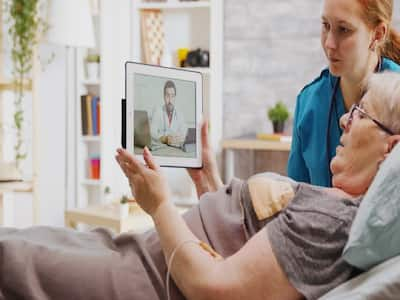
Telecardiology allows healthcare providers to diagnose and treat cardiac patients remotely. Read on to know the benefits of Telecardiology in modern healthcare.
Telecardiology utilises cutting-edge technology that is transforming the way cardiac care is delivered across India. It can provide more efficient and timely care to cardiac patients in tier 2 & 3 cities. Technology allows medical professionals to diagnose cardiac diseases from a distance, using specialised software and equipment. This reduces the need for unnecessary time-consuming office visits and allows medical teams to respond to medical emergencies more quickly. This helps senior specialists in urban areas to detect abnormalities in cardiac activity in people residing in underserved regions before they become serious health issues.
Telecardiology comes with its own set of advantages in modern healthcare, which are as follows.
Enhanced Access to Cardiac Care
Telecardiology allows doctors to assess a patient’s cardiac health without being present in the same room as it offers various services to patients including video consultations, real-time live recordings, monitoring, diagnostics, and more. It helps to develop a comprehensive overview of the patient’s condition and history that can contribute to more accurate treatment and better outcomes. By providing enhanced access to cardiology via technology, specialists are better equipped to attend to the needs of their patients.
Timely Intervention and Reduced Response Time
Through telecardiology, physicians can rapidly analyse patients’ cardiovascular health, prescribe treatments, and provide follow-up care remotely over the internet or through connected devices. Remote monitoring and early diagnosis allow cardiac surgeons to act promptly in emergencies and provide timely interventions and treatments, even in emergencies with limited access to medical facilities. A cardiac surgeon can direct emergency response personnel to provide timely assistance during medical crises that might have otherwise gone untreated.
Cost-Effectiveness
Telecardiology enables healthcare providers to diagnose and treat patients remotely, using remote ECG and imaging devices, to make accurate and timely diagnoses and suggest treatment accordingly. It also has the potential to significantly reduce healthcare costs through the use of evidence-based medicine. By utilising advanced data analysis and data-driven decision-making, it enables providers to tailor their treatment decisions to the individual needs of their patients, potentially reducing medical expenditures and allowing healthcare providers to focus their resources on more impactful treatments.
READ RELATED: Breaking Barriers In Hepatitis B: Pharma’s Pioneering Efforts And Promising Research Initiatives
Continuous Monitoring and Improved Patient Compliance
Continuous remote monitoring allows for a better understanding of the patient’s health and allows cardiologists to recognize any changes or issues which might arise. This early detection can often be the difference between successful treatment and complications. Telecardiology also has the potential to improve patient compliance. By providing medical advice and instructions to the patient remotely, healthcare providers can ensure that patients are following through with prescribed treatment plans and medications. This improved compliance can help to reduce hospital admissions and other costly medical interventions. By providing detailed, real-time data, providers have a better understanding of the patient’s condition and can make more informed decisions on their care.
Teleconsultations and Collaborative Care
Teleconsultations and collaborative care through telecardiology are making healthcare more accessible for patients who need immediate attention or don’t have access to specialist medical care. This type of technology can facilitate remote monitoring and transmission of cardiac data from senior specialists to local physicians, thereby improving the continuity of care. Teleconsultations allow doctors and specialists to connect from different locations and share their expertise to achieve the highest quality of care for their patients. It can reduce diagnostic errors, decrease the costs associated with travelling for healthcare, and increase the efficiency of the healthcare system.
Telecardiology is significantly more cost-effective than other traditional forms of cardiac care. By utilising modern telecommunication technology, cardiac professionals can deliver high-quality care across the globe. This can be immensely beneficial to patients and doctors alike, as it can be more time-saving and allows for a more personalised healthcare experience. By taking advantage of this technology, the medical community can ensure that many more people receive the quality care they need, regardless of location.
This article is written by Arindam Sen, Director, i2i telesolutions
Total Wellness is now just a click away.
Follow us on
window.addEventListener(‘load’, (event) => {
// $(document).ready(function(){
$(‘#commentbtn’).on(“click”,function(){
(function(d, s, id) { var js, fjs = d.getElementsByTagName(s)[0]; if (d.getElementById(id)) return; js = d.createElement(s); js.id = id; js.src = “//connect.facebook.net/en_US/sdk.js#xfbml=1&version=v2.3”; fjs.parentNode.insertBefore(js, fjs);}(document, ‘script’, ‘facebook-jssdk’));
$(“.cmntbox”).toggle();
});
// });
});








